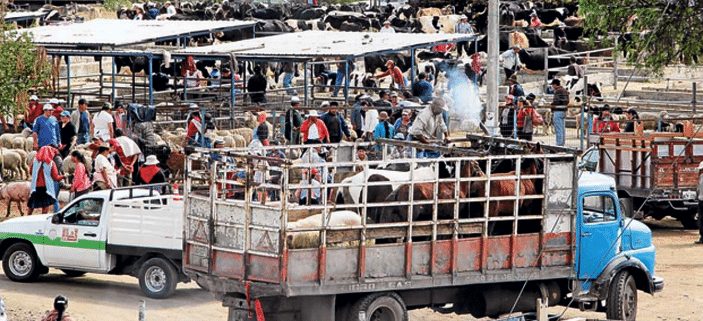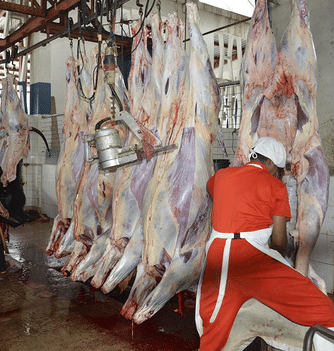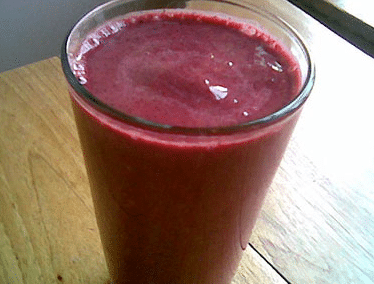Cuenca’s bustling public slaughterhouse is a place where few expats ever go

Heading to the slaughter.
By Deke Castleman
The taxi took a left off Las Americas at Avenida del Toril, then a right on Camino a Patamarca, and we were in Parroquia Hermano Miguel, just outside the city limits. It was a Thursday morning, when a large open-air mercado happens at the Camal Municipio, a field bordered by the Rio Machangara and Calle de Camal.

Makin’ bacon.
One section of the field hosts a livestock market, with calves, cows, steers, bulls, pigs, and sheep of all sizes arriving and departing — in cattle carriers, dump trucks, and pickups. Some of the animals also wind up next door to the Camal Municipio at Empresar Publica Municipal de Rastro Y Plazas de Ganado, EMURPLAG for short. The Rastro de Ganado — or as close as I can translate it, the “end of the cattle trail,” or “el lugar donde matan los animales,” as we told the cab driver — is Cuenca’s municipal slaughterhouse
I was on my way to EMURPLAG with a friend who was picking up fresh organ meat, among the most nutritious of all animal protein. In nature, most predators go straight for the liver, kidneys, heart, and other organs after a kill, only digging into the muscle, fat and flesh afterwards.
It’s well-known that in hunter-gatherer and tribal societies, the organs were also considered most valuable, and they were given to elders who needed their direct benefits. The “superfood” organs offer some of the densest sources of B vitamins, iron, phosphorus, copper, and magnesium and are rich in the fat-soluble vitamins A, D, E and K. On the cutting edge of health and nutrition, my friend had been to EMUPLAG several times previously to buy raw cow kidneys, adrenals, hearts, and brains. Today we were in quest of brains and bull testicles.

Meat cutters prepare products for market.
Unlike abbatoirs in the U.S. (I have unfond olfactory memories of the Oscar Meyer processing plant in Madison, Wisconsin), there’s no foul smell outside or inside EMURPLAG. We passed through the security fence and, walking by workers in blue or green jumpsuits, hard hards, rain slickers of various colors, and bright yellow rubber boots, along with some of the “doctors” in white veterinarian-type jackets, we entered the front office.
Shortly, we were ushered into a back office, where one of the managers of the plant, Dr. Felipe Camacho Pauta, listened to what we wanted and dispatched Dr. Jaime Hurgueitio to bring us the organs that had been very recently separated from the cows and bulls.
In the office was a wide-screen TV, segmented into small squares, each displaying the view from one of more than 30 cameras trained on the fabrica floor. It was like a mini-tour of EMURPLAG and when Dr. Camacho noticed my interest, he double-clicked on several cameras, enlarging the views to full-screen, showing us different aspects of the operation. Workers carried pig carcasses over their shoulders, threw animal heads into a big vat, skinned calf carcasses on hooks, hosed blood off hanging meat, walls, and floors, chopped apart big bones, and the like. Somewhat gory, but fascinating all the same.

A steaming pot of bovine gonads.
While we waited for Dr. Hurgueitio to return with our order, Dr. Camacho regaled us with a recipe for testicle ceviche. Essentially, you dice the raw meat and marinate it in lime juice overnight, then add onion, tomato, garlic, ají pepper, and cilantro. When ready to eat, he told us, the dish is “muy rico, delicioso, y saludable.” His expression of pleasure reminded me of a French chef extolling escargots de Bourgogne or something.
We asked him how often other Norte Americanos visit the fabrica to pick up organ meat and he said, “Nunca (Never).” Which might be why when Dr. Hurgueitio returned, carrying 16 bull testicles and a load of cow brains weighing about 25 pounds, he told us we didn’t owe them any money. It was, in the end, a gift.
Bull testicles, rich in vitamins, minerals, and hormones, especially testosterone, are a pretty common food, especially in cattle country. They’re known variously as Rocky Mountain or prairie oysters in the States and huevos de toro in Latin America; a quick computer search also turned up “tasty testes,” “cowboy caviar,” and “swinging beef.” Once a year, yearling steers are rounded up, branded, dehorned, and castrated; a rancher winds up with scores of stones at the end of a busy day. In bygone times, the “tendergroins” were barbecued over the branding coals; today, they’re more likely to be sautéed, deep-fried, grilled, or stewed.

It may look like a strawberry smoothie but it’s not.
My friend, however, has her own ideas about preparing the organ meat, which don’t include cooking.
Once back at her place, we washed the organs thoroughly and stored some in the refrigerator and freezer. We selected a particularly succulent-looking nut, snipped off the extra collagen with scissors, cut it into quarters, and tossed those into the blender with orange juice and ginger. We also added the hypothalamus from the brain matter.
“Bottoms up!” she toasted, handing me an orange-ginger-gonad smoothie.
__________________
Photos by Deke Castleman
Reposted from 2015.





















